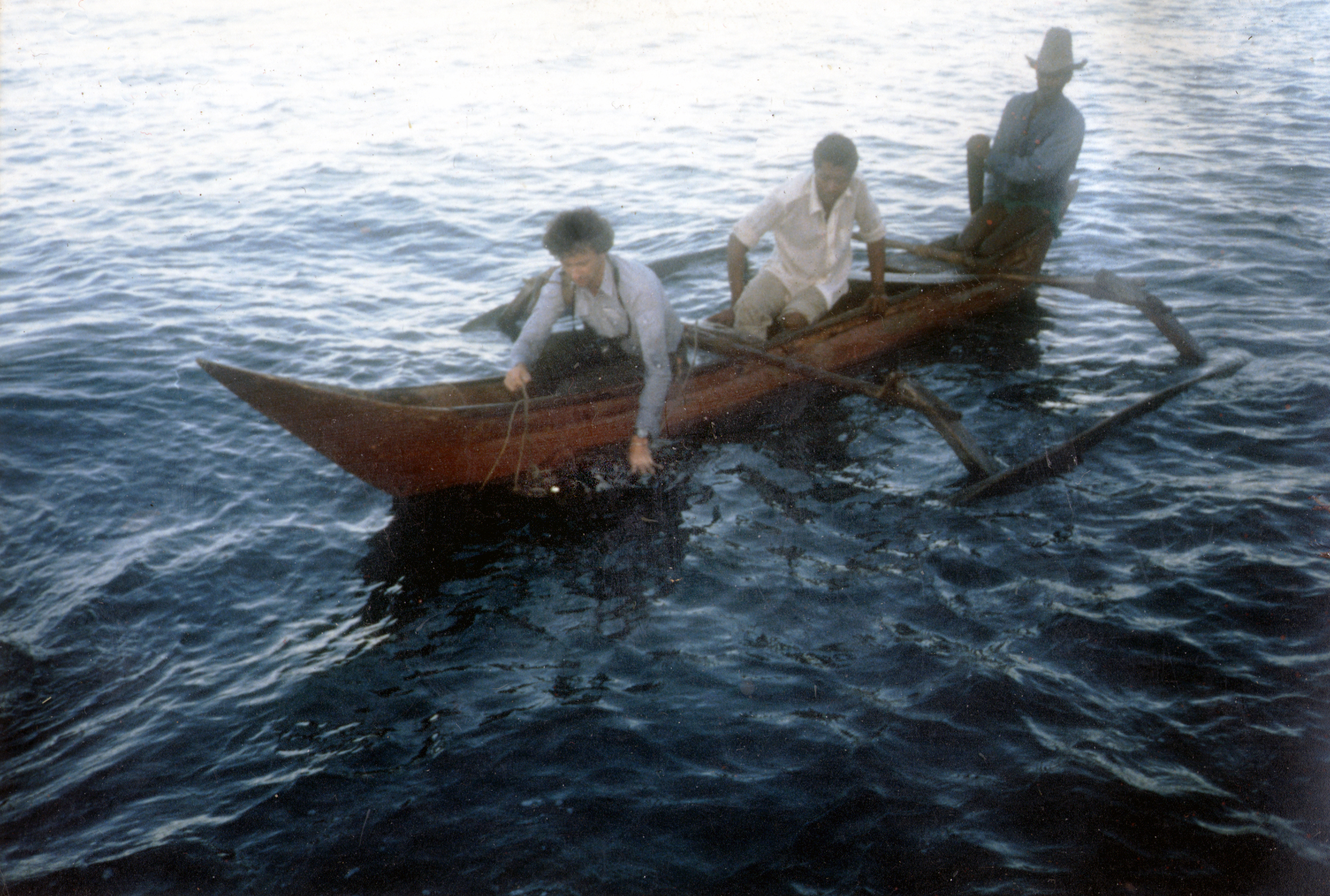Recollections of the Past 30 years pursuing Coelacanths
Jerome Hamlin, creator dinofish.com
Three days later there was a gently rapping on my bedroom door at 5:45 a.m. It repeated. A voice, soft but urgent then intoned: “Une coelacanthe vivant! Une coelacanthe vivant.” Up with a start I opened the door. He was from the hotel staff. A coelacanth had just been caught a few hours ago and the fisherman was bringing it right to the hotel in the water attached by a line to his pirogue. I put my pants on and headed outside. I knocked on Peter’s door. At first he thought I was joking. Then, with the staffer’s help we called Jean Louis Gerod, the French diver who ran a dive shop at the hotel. Woke him. He agreed to come by and lower the fish in his cage. I grabbed a hefty garbage bag I’d brought along just for this purpose. I’d read that a coelacanth’s eyes were very sensitive to light and that this might be one of the stressors on the surface which killed them. Two men in a canoe “pirogue” were approaching. They arrived right along the seawall, but the waves kept them from landing. The fisherman beckoned me into the canoe. I stepped into the boat dunking my camera on the way- so much for the Leica. Sitting in the bow, I floated the bag over the fish’s head. As this was going on Peter came out and took flash pictures which clearly showed the glowing eye. Now Jean Louis arrived, took our living fish supposedly to put it in a chicken wire cage he had for this purpose and lower that cage down 60 meters to try to cool and recompress the fish.

The author with living coelacanth, 1986. Eye glow is visible
Paul had gone out in a different canoe the night before, in a different area, and they had capsized. When he returned to the excitement at the hotel, he changed gears and clothes quickly. Paul sent a telex via the U.S. consulate to Arn Neis back in New York. Arn was handling our telex communications via his company E.T. Browne in New Jersey. We had a living coelacanth in a cage at 50 meters in front of the hotel. Lots of excitement back home. This was beyond anyone’s expectation. I was a bit skeptical. I had seen what did not look like a very energetic fish, with exaggerated gill flexes every four or five seconds. I had kept a marine aquarium for years and this did not look like a healthy fish. But in New York, steps were taken at the Aquarium to prepare a large fish transporter for shipment. Two days later the fish was brought to the surface. Paul went out there with a mask and snorkel. He returned to me breathless saying he had been working with the fish which was still alive and to bring a camera. I put a highspeed film in his Nikon and stuffed that in an underwater bag. I then followed him with my own mask and snorkel. What I saw was a dead coelacanth, with milky eyes, moving back and forth in the shore swell. I snapped some shots of Paul with the fish. When the fish was brought ashore Paul posed next to it with a sad expression, making a thumbs down gesture. While we had our lunch, the word had got round. A man from a nearby hotel wanted to take the fish with him to photograph at his hotel. He was a developer and needed some publicity. I managed to stop that. Then he got down on all fours and gathered scales that had sloughed off- little treasures in their own right. Such was the power of the coelacanth. This fish made it into a government freezer room.
To wrap up the trip we acquired a couple of frozen coelacanths in addition to the two caught while we were there. I made sure we left some behind so the Japanese group (JASEC) could have them if they returned and not pressure the fishermen to catch more. Pallets of dry ice arrived on a flight from Paris and with help from the U.S. consulate, our fish were packed in coffin boxes for the long flight home. Before we left Paul fell ill. As the mighty 747 lifted off from the Comoros at the end of our reconnaissance visit, we basked in the aircraft’s air conditioning. Everyone, including Paul felt better. We were elated at our successes. In ten days we had done as much if not more than any previous coelacanth expedition.
